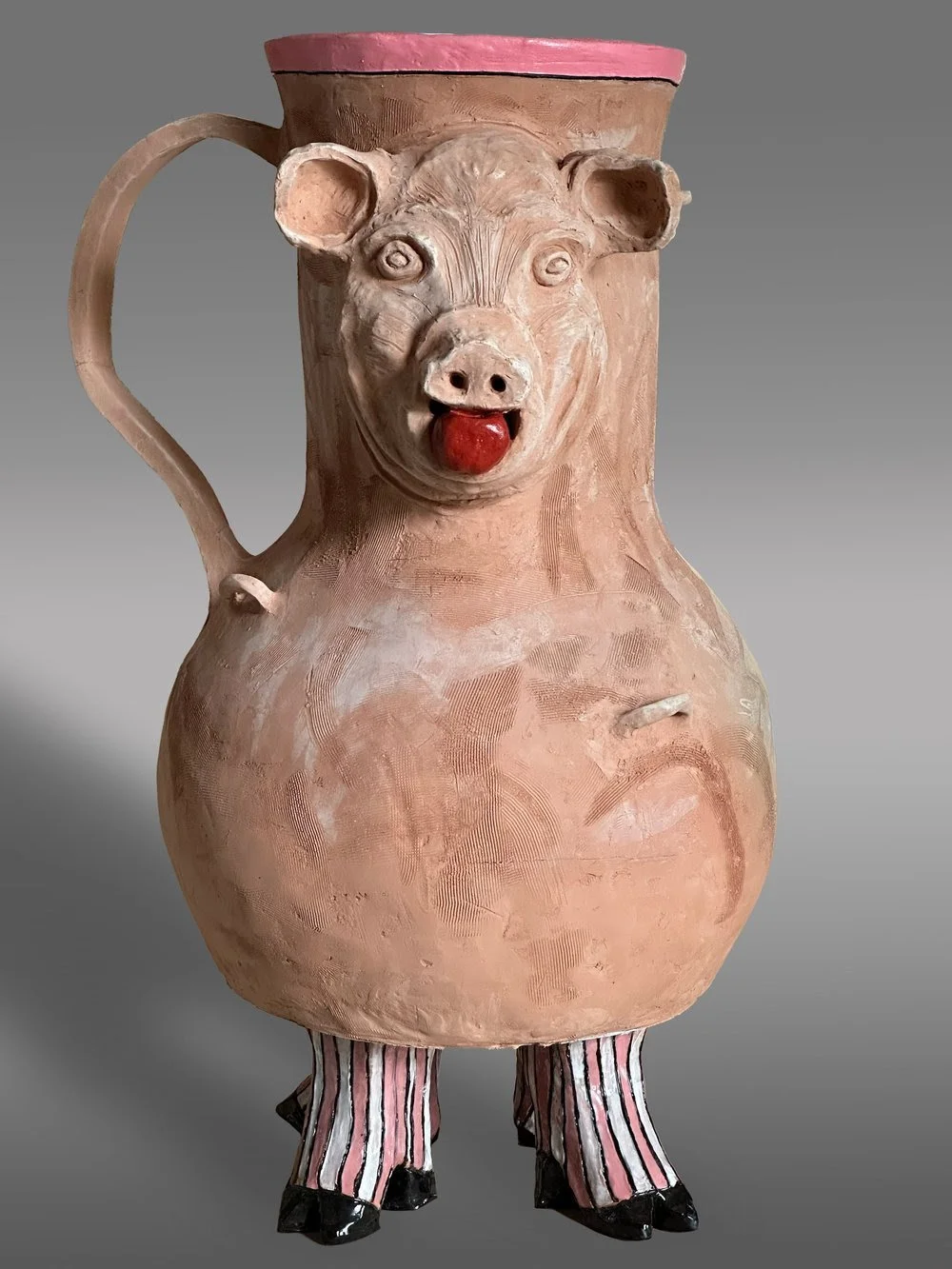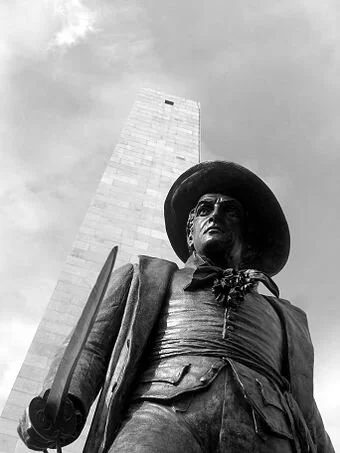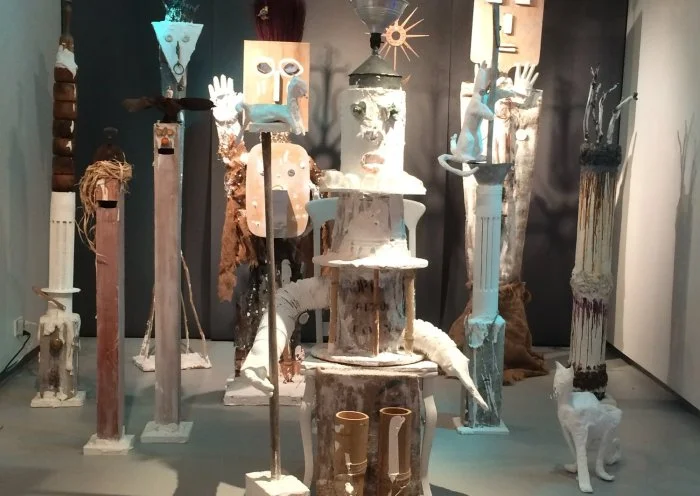
Why to be a vegan?
“Prosciutta” (clay, glaze, acrylic and epoxy), by Boston area artist Joe Caruso, in the show DIG, at the Art Complex Museum, Duxbury, Mass., through Aug. 11
— Image courtesy of Art Complex Museum
The museum says that DIG features the work of Joe Caruso, Jennifer Liston Munson, Palamidessi and Marsha Odabashian in a show that "recalls traditions, events, and customs across a range of cultures.’’ The artists in explore "what makes us human" by exploring the past and how it connects to the future. The show "values, preserves and calls attention to what came before so we can learn from the past as we cope with the present and prepare for the future."
‘Complacent in her captivity’
“Emily’’ (mixed media), by Joe Caruso, in Galatea Fine Art’s (Boston) online gallery.
This text runs with it:
“She stares out of a prison of an unknown making, complacent in her captivity. The woman's image in this construction seems unaware that time is passing. Once she was young and the world was open. Now she guards hidden memories.’’
Mr. Caruso lives in the Charlestown section of Boston, though his studio is in South Boston. Charlestown is the oldest part of Boston, having been originally laid out in 1629.
See:
joe-caruso-jwkc.squarespace.com
And:
galateafineart.com
1629 site of the "Great House" of Puritan leader and the Massachusetts Bay Colony’s leading founder, John Winthrop (1587-1649) in City Square, Charlestown, uncovered during the Big Dig
The Bunker Hill Monument and William Prescott Statue, in Charlestown. Prescott ( 1726 - 1795) was an American colonel in the Revolutionary War who commanded the Patriot forces in the Battle of Bunker Hill. Prescott is known for his order to his soldiers, "Do not fire until you see the whites of their (the English) eyes".
'The artifacts within'
Part of the show “Joe Caruso: Gods, Totems and Tricksters,’’ at Laconia Gallery, Boston, Feb. 1-March 24.
The gallery says:
“With references to the field of archaeology, Joe Caruso’s recent work which consists of painting, sculptural assemblage and combinations of both, explores the themes of discovery, time and transformation, and also draws inspiration from ancient mythology.
“In his sculpture, Caruso uses objects reclaimed from the street, from bins on trash day, from thrift shops and from his studio. Some are made of weathered wood or rusted metal, suggesting age and a time gone by and other objects are no longer needed, discarded and perhaps forgotten. They become a starting point for something new and re-emerge, transformed into fresh compositions, given new life and meaning.
“Just as the archaeologist’s exploration involves destruction and reconstruction, the surfaces of Caruso’s paintings and painting/sculpture combinations are worked and reworked over time, a process of applying paint and then scraping it off, digging and finally consolidating and solidifying when heat is applied. Materials in his painting practice include oil, wax, sand, glass, shells and minerals. Sometimes using shards of plaster, remnants from the sculptural assemblages. Some have impressions and indentations that remind one of fossils. The painting surfaces are rough and crude on the one hand and have a hint of sparkle on the other that call to mind weathered walls with flicks of sunlight. Lines crisscrossing the surfaces are dug deep and might be viewed as large drawings.
“A third dimension is sometimes created by adding sculptural elements to the painting surfaces or by placing them on an attached shelf. These combination pieces are often wrapped in wire in the configuration of a grid resembling a window, inviting the viewer to come up close to discover the artifacts within.’’




